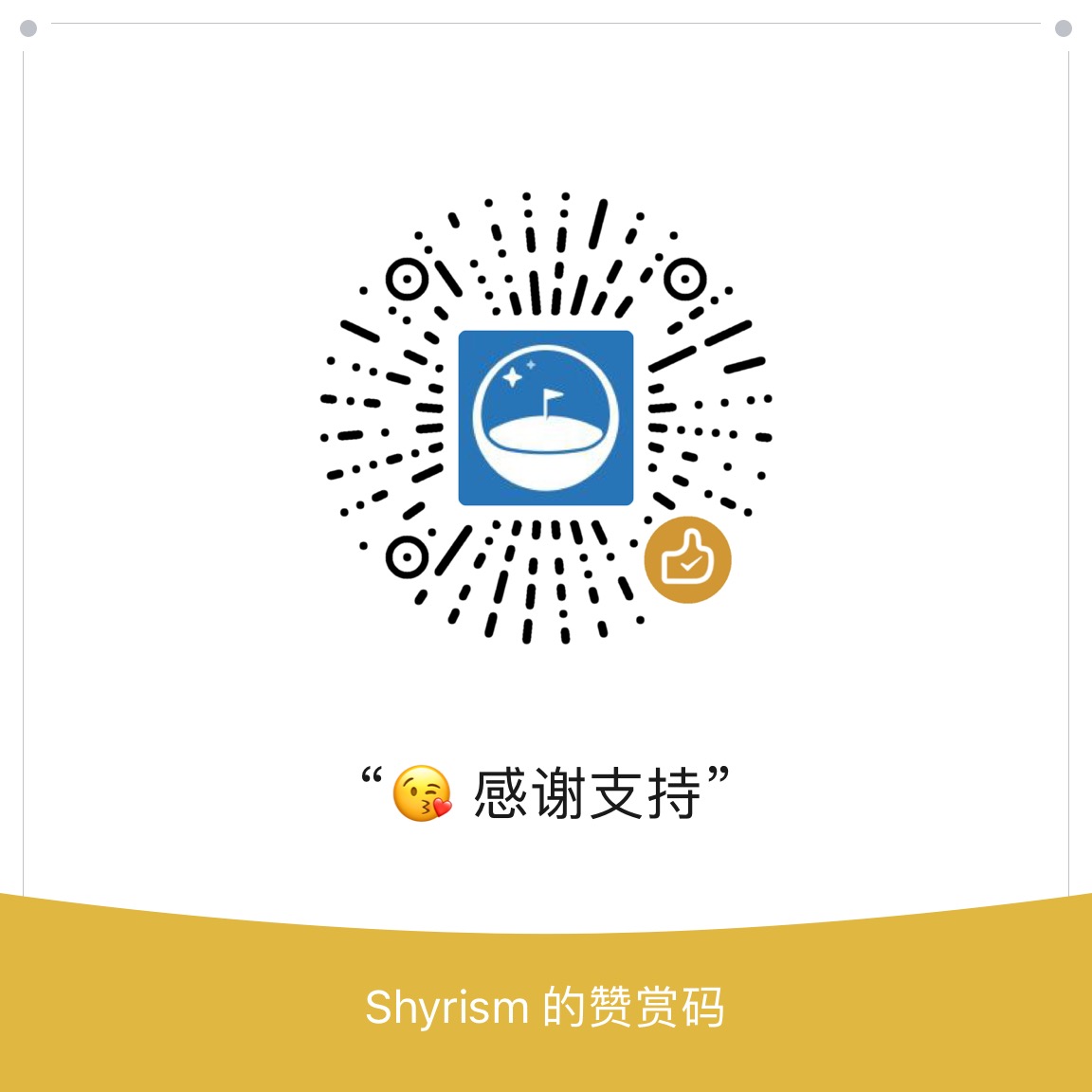Original link: https://shyrz.me/news-15-second-brain/

22·05·18 Issue 15

Everyone, please take care of yourself.
The selections in this issue are rather fragmented. “12 Steps to Build a Second Brain” comes from Tiago Forte, a famous foreign pioneer of Second Brain theory, who briefly sorts out this methodology and provides a guide. In addition, his new book Building a Second Brain will be released in a month, if you are interested, you can read it. Next is the announcement of the 2022 Pulitzer Prize, and an art history article from DailyArt Magazine “15 Things You Didn’t Know About Rembrandt’s ‘The Night Watch'”, I hope you like it.
12 Steps to Building a Second Brain
Forte Labs May 5, 2022 Article by Tiago Forte.
- Identify what you’re capturing <br /> Think of your “second brain” as an intimate regular book or diary. What would you most like to capture, learn, explore or share? Find two or three pieces of content that you find valuable to get started.
→ Digital Note Workshop - Choose the right software <br />If you’re not already using a digital note-taking application, get started now. But I know that choosing your note-taking app can feel overwhelming and paralyzing.
My advice is to choose a software based on your note-taking style, as note-taking is a highly personal process based on intuition and feeling.
→ 4 note-taking methods and their suitable applications - Pick a Capture Tool <br /> I recommend starting with a read-later app like Instapaper or Pocket, and save any articles or other web content that interests you. This step will forever change the way you think about consuming content.
- Set up PARA
Set up four folders of PARA (Projects-Areas-Resources-Archives, i.e. Projects-Areas-Resources-Archives) and, with a focus on operability, create a dedicated folder (or tag) for each project currently in progress ).
From this point, focus on capturing notes related to these items.
→ Introduction of PARA system - Get Inspiration by Identifying Your Favorite Questions <br /> Make a list of some of your favorite questions, save the list as a note, and revisit it anytime you need to capture inspiration. Use these open-ended questions as filters to decide what is worth keeping.
- Automatically capture your ebook annotations <br />Set up an integration to automatically send annotations to your digital notes from your reading apps (like Read Later or eBook apps).
Tools like Readwise or IFTTT can be useful. - Practice Progressive Summarization <br /> Summarize a set of notes related to a project you’re currently working on with multiple layers of highlighting, and see how it affects the way you interact with those notes.
→ Introduction to Progressive Summarization - Experiment with just one “tundish” <br /> Choose a project that may be ambiguous, bulky, or simply difficult, and choose only a part of it to work on — a “tundish”. Maybe it’s a business plan, diagram, event planning, or a key topic for a meeting with your boss.
Break the project down, complete a small part of it, and share it with at least others to get positive feedback.
→ More examples of “tundish” - Make progress on a deliverable <br />Select a project deliverable for which you are responsible and use any of the workflow and presentation techniques outlined here. See if you can make decisive progress with just the notes in your Second Brain.
These techniques are designed to help you execute projects more efficiently. They are standardized procedures that allow you to go faster, save your progress, and produce higher quality work. - Schedule a Weekly Review <br /> Start a habit of doing weekly reviews by writing a weekly self-meeting on your calendar. In the beginning, just organize your notes inbox and decide your priorities for the week. After that, you can add other steps as your confidence grows.
→ “Weekly Review” one-stop guide - Assess your note-taking skills <br />Assess your current note-taking method and areas for improvement.
→ Productivity Potential Test - Join Personal Knowledge Management Communities <br /> Follow and subscribe to some KOLs on Twitter, LinkedIn, Substack, Medium or other platforms and join communities related to personal knowledge management content.
Share experiences as you build your “second brain.” There’s nothing better than asking someone who’s been there before to try something new.
2022 Pulitzer Prizes Announced
The 106th Pulitzer Prizes in 2022 were announced at Columbia University on the afternoon of May 9, local time:
- Public Service Award : Washington Post/Capitol Hill 1.6 Attacks Series <br />Convincing and vivid description of the January 6, 2021 attacks on Washington, giving the public a glimpse of America’s darkest hour One has a thorough and firm understanding.
- Breaking News Reporting Award : Miami Herald Staff / Champlain South Tower Collapse Incident <br /> Urgent and comprehensive coverage of the Champlain South Tower collapse, combining clear and compassionate writing with comprehensive journalism Combined with accountability reporting.
- Investigative Reporting Award : Corey G. Johnson, Rebecca Woolington, and Eli Murray of the Tampa Bay Times / Battery Recycling Plant Labor and Pollution Reports <br />Convincing about the highly toxic hazards at Florida’s only battery recycling plant The report forced the plant to implement safety measures to adequately protect workers and nearby residents.
- Interpretive Reporting Award : Quantum Magazine staff, especially Natalie Wolchover/Webb Telescope Series <br />Reports revealing the intricacies of building the James Webb Space Telescope, designed to advance groundbreaking astronomical and cosmological research .
- Local Journalism Award : Cecilia Reyes of the Chicago Tribune and Madison Hopkins of the Association for Better Government / Chicago Building Fire Safety Issues <br />An in-depth investigation into Chicago’s longstanding issue of poor enforcement of building fire safety codes, the situation Law-conscious landlords once led to serious violations of the law, resulting in dozens of unnecessary deaths.
- National Journalism Award : New York Times Staff/Police Stops to Death <br />Ambitious project that quantifies patterns of police stoppages to death, shows how hundreds of deaths were averted, and police How to avoid punishment in general.
- International Journalism Award : The New York Times / Exposing civilian casualties in U.S. airstrikes in Iraq, Afghanistan and Syria <br /> Brave and tenacious reporting on the massive civilian casualties of U.S.-led airstrikes challenging U.S. The official account of military operations in Syria and Afghanistan.
- Feature Writing Award : The Atlantic’s Jennifer Senior / 20th Anniversary of 9/11<br />A family reflects on loss 20 years after 9/11, deftly combining the author’s personal experience with sensitive reporting , revealing the long process of grief.
- Critic’s Award : Melinda Henneberger, Kansas City Star / Persuasive op-ed against former detective for sexually hunting black women <br /> demanding justice for the victim of a retired police detective accused of sexual assault.
- Criticism Award : New York Times contributing commentator Salamishah Tillet / African American Stories in the Arts<br /> For erudite and styled writing about black stories in art and popular culture, successfully framing academic and non-academic critiques bridge.
- Editorial Writing Award : The Houston Chronicle/Series on Voting Suppression in Red States <br />For original reporting that sheds light on voter suppression tactics in this movement, dispels the pervasive myth of voter fraud, And advocate for reasonable voting reform.
- Graphic Reporting Award : Insider’s Fahmida Azim, Anthony Del Col, Josh Adams and Walt Hickey / Xinjiang Training Camp Experience Comics <br />Uses graphic reporting and the medium of comics to tell a powerful and compelling story about China’s oppression of Uyghurs Intimate stories that make it more widely known.
- Breaking News Photo Awards:
Los Angeles Times’ Marcus Yam / U.S. Withdrawal from Afghanistan <br />A documentary image of the U.S. withdrawal from Afghanistan, documenting the human cost of the country’s historic change.
Getty Images Win McNamee, Drew Angerer, Spencer Platt, Samuel Corum and Jon Cherry / Shock Capitol Hill
A comprehensive and eye-catching photo of the attack on the US Capitol. - Feature Photography Award : Reuters’ Adnan Abidi, Sanna Irshad Mattoo, Amit Dave and the late Danish Siddiqui / India’s COVID disaster 2021 <br />Images of India’s far-reaching effects of COVID, balancing intimacy and destructiveness while giving The audience has a high sense of place.
- Audio Reporting Award : Staff of Futuro Media and PRX / “Suave”
Suave , a brutal, honest and immersive account of a man re-entering society after serving more than 30 years in prison.
15 Things You Didn’t Know About Rembrandt’s ‘The Night Watch’
DailyArt Magazine May 15, 2022 article by Zuzanna Stánska and Nicole Ganbold.
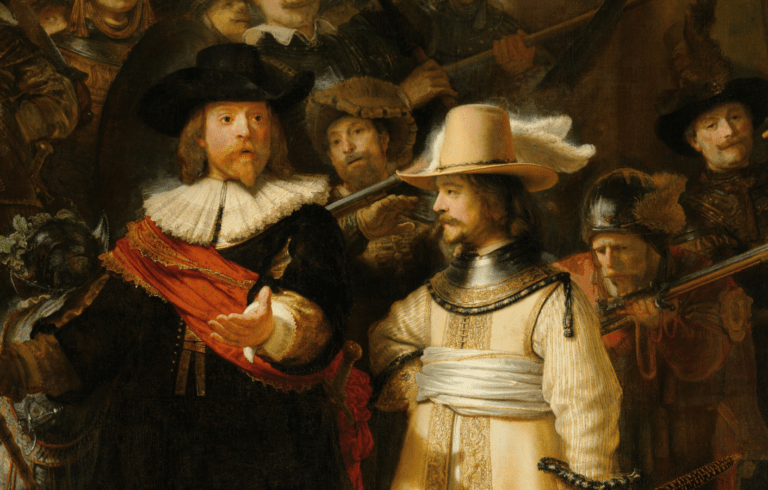
Rembrandt van Rijn / The Night’s Watch / 1642 / Rijksmuseum, Amsterdam, Netherlands / detail
The Night Watch by Rembrandt van Rijn is a monumental painting that is still on display in the ” Gallery of Honor ” at the Rijksmuseum in Amsterdam, the Netherlands. Considered the most important figure in the Dutch Golden Age , Rembrandt was commissioned around 1639 for this particular group portrait, which was completed in 1642 and depicts the citizen in colossal proportions (363 cm × 437 cm) Parade of members of the militia guard (schutterij).
Captain Frans Banninck Cocq, the main guard leading the team, is depicted in the center of the frame wearing a black and red sash. His lieutenant, Willem van Ruytenburch, in yellow, stands to his left, standing out from the dark background.

Night patrol does not take place at night
Over the centuries, the painting was covered in a dark layer of varnish and grime, leading scholars to mistake it for depicting a night scene , hence the name. In fact, over the centuries, this varnish has grown so thick that in 1911 it protected the canvas from knife attacks. The varnish was eventually removed in the 1940s, but the title of the painting remains.
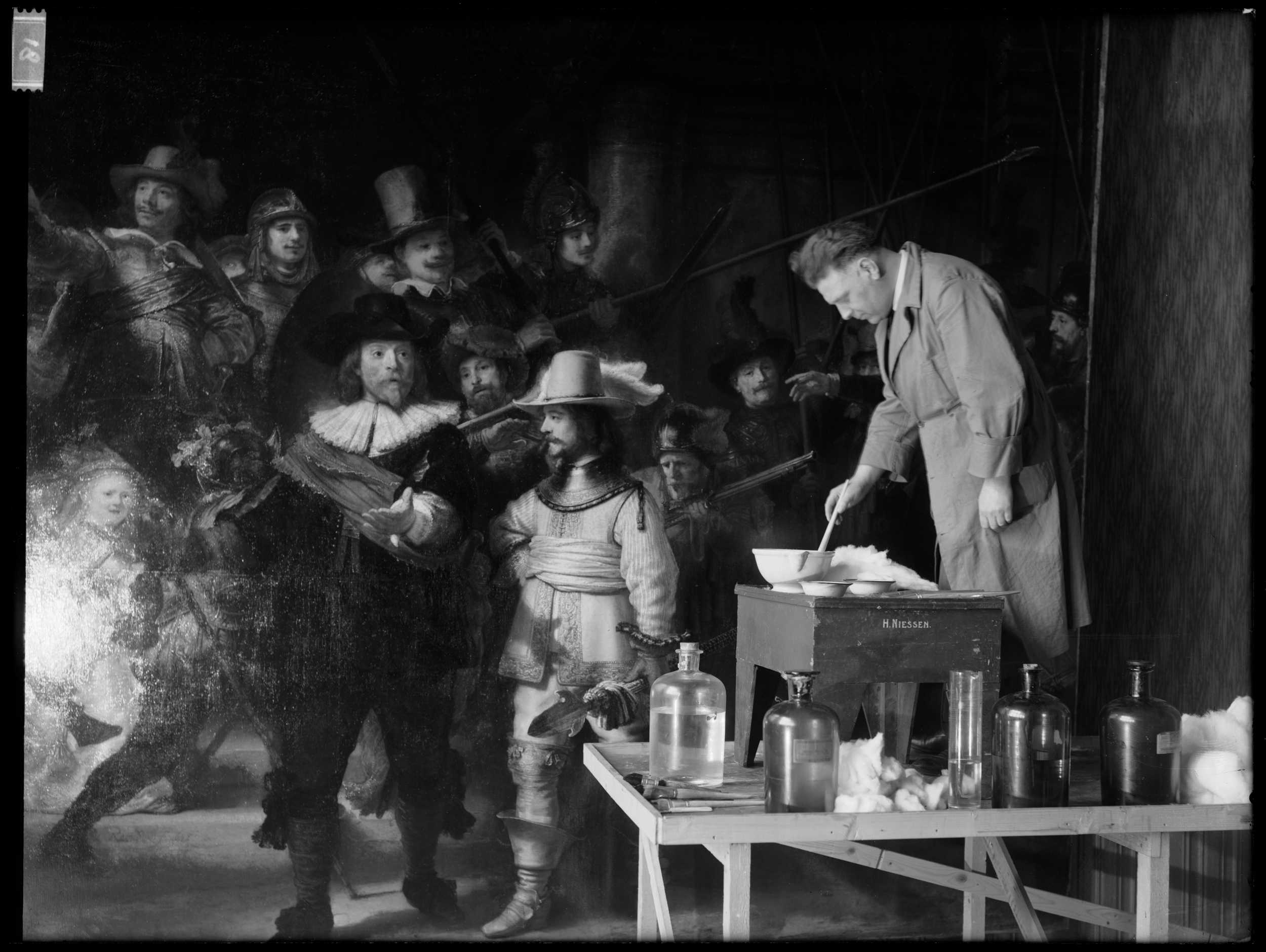
The official title of the painting is longer and more complex
By the way, the official title is “Second Militia Company under the command of Captain Frans Banninck Cocq” (Dutch: De compagnie van kapitein Frans Banninck Cocq en luitenant Willem van Ruytenburgh maakt zich gereed om uit te marcheren ). Obviously, we prefer the version of The Night’s Watch.
Made for the Arquebusier Guild
This masterpiece was commissioned to hang in the ballroom of the Kloveniersdoelen in Amsterdam. The Kloveniersdoelen is the headquarters and shooting range of the local civil guard, including the arquebusiers, and takes its name from the arquebus, an early musket known as haakbus in Dutch and couleuvrine in French.
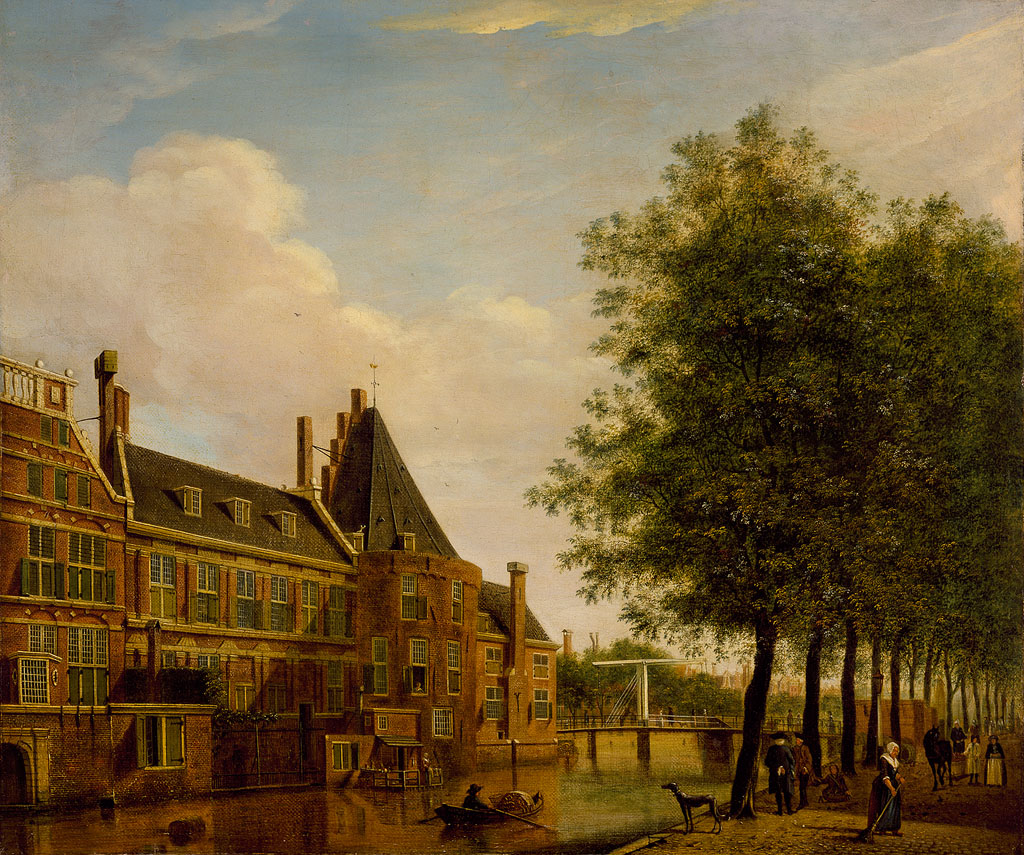
we don’t know where it’s done
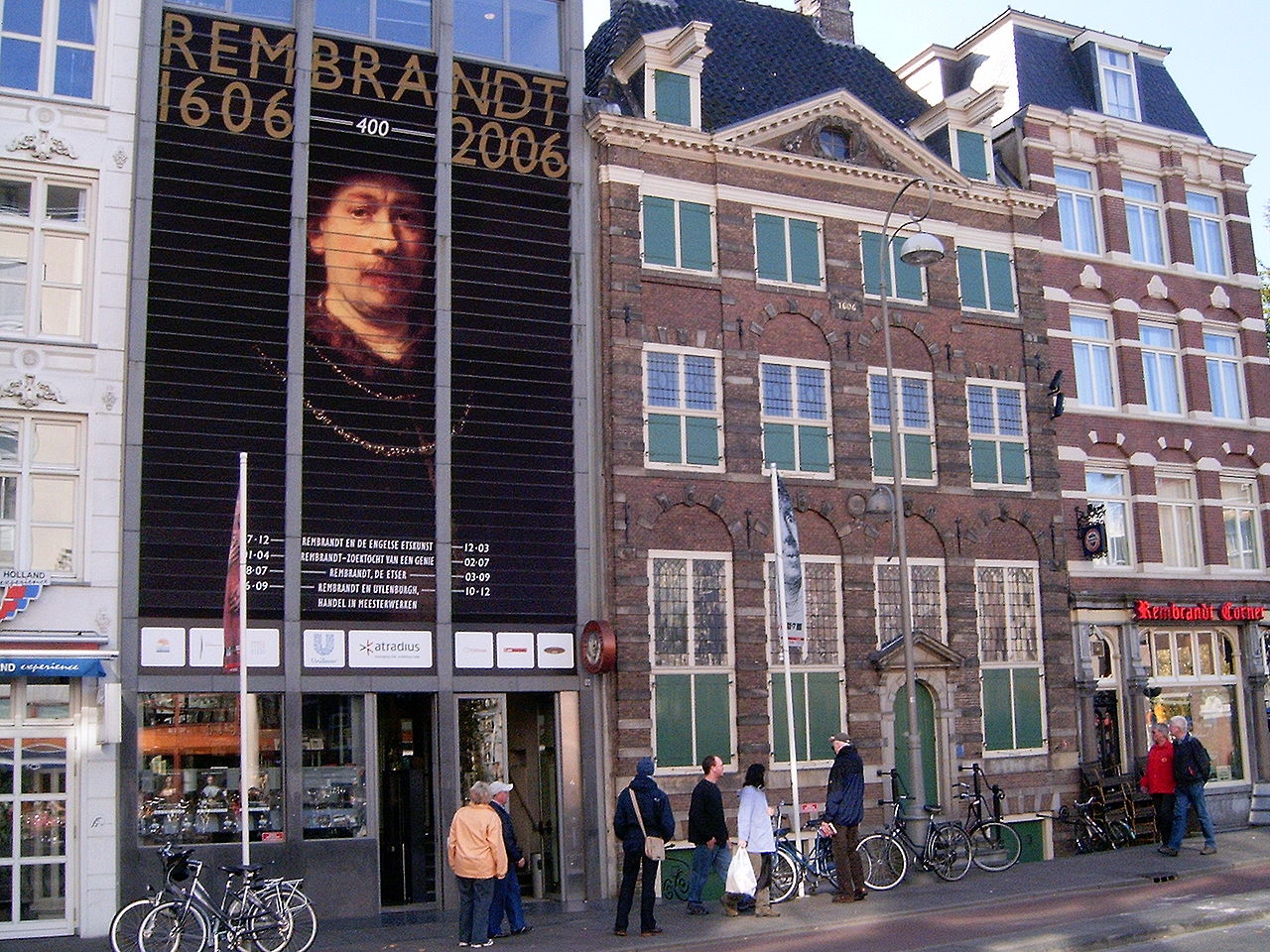
The painting itself was too large to be done in the studio in Rembrandt’s former residence (modern address Jodenbreestraat 4, now known as the Rembrandt House Museum ). One possibility is that Rembrandt built a makeshift “summer kitchen” at the back of his home.
Rembrandt’s work pays the equivalent of… 726 euros
According to the Rijksmuseum, Rembrandt was paid 1,600 guilders for his paintings. At today’s exchange rate, that would be about 726 euros or 766 dollars. But don’t worry, it’s not cheap – at that time, an outdoor worker was earning 6.50 guilders a week, or over 300 guilders a year. This is no small fortune.
This is Rembrandt’s great success
The client was so pleased with the unconventional painting that Rembrandt became a star, which allowed him to continue taking commissions from the big names. But after The Night’s Watch was completed, Rembrandt entered a decade-long stagnation in portraiture and drastically scaled back painting.
But there are gains and losses
Rembrandt’s success didn’t last forever. When he died in 1669, at the age of 63, he was buried in an unmarked grave owned by the church. Twenty years later, his body was exhumed and discarded, as is customary for those who died of poverty. Why is this happening?
The artist is getting more and more extravagant – he owns a magnificent house in Jodenbreestraat 4 and has a magnificent and very expensive fine art collection. He just spent too much money and quickly went into debt. Moreover, some researchers here see problems in the artist’s private life – the death of his beloved wife Saskia in 1642, followed by their son Titus in 1668.
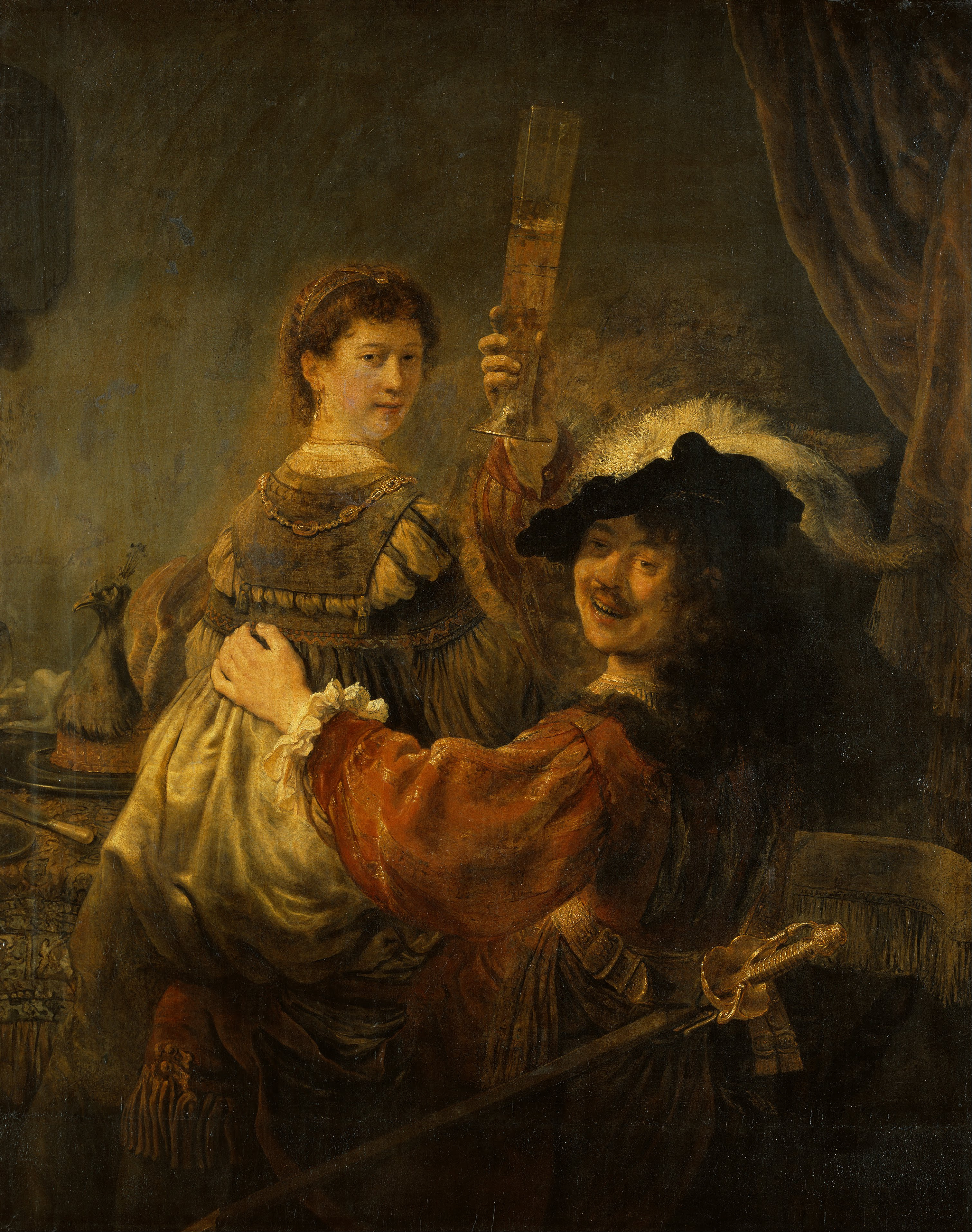
The Night Watch is very innovative
There is an established tradition of group portraits representing militias in Dutch Golden Age painting. They are usually large in scale and depict the seated person in an unnatural and static way. So, what is the revolutionary significance of Rembrandt’s method?
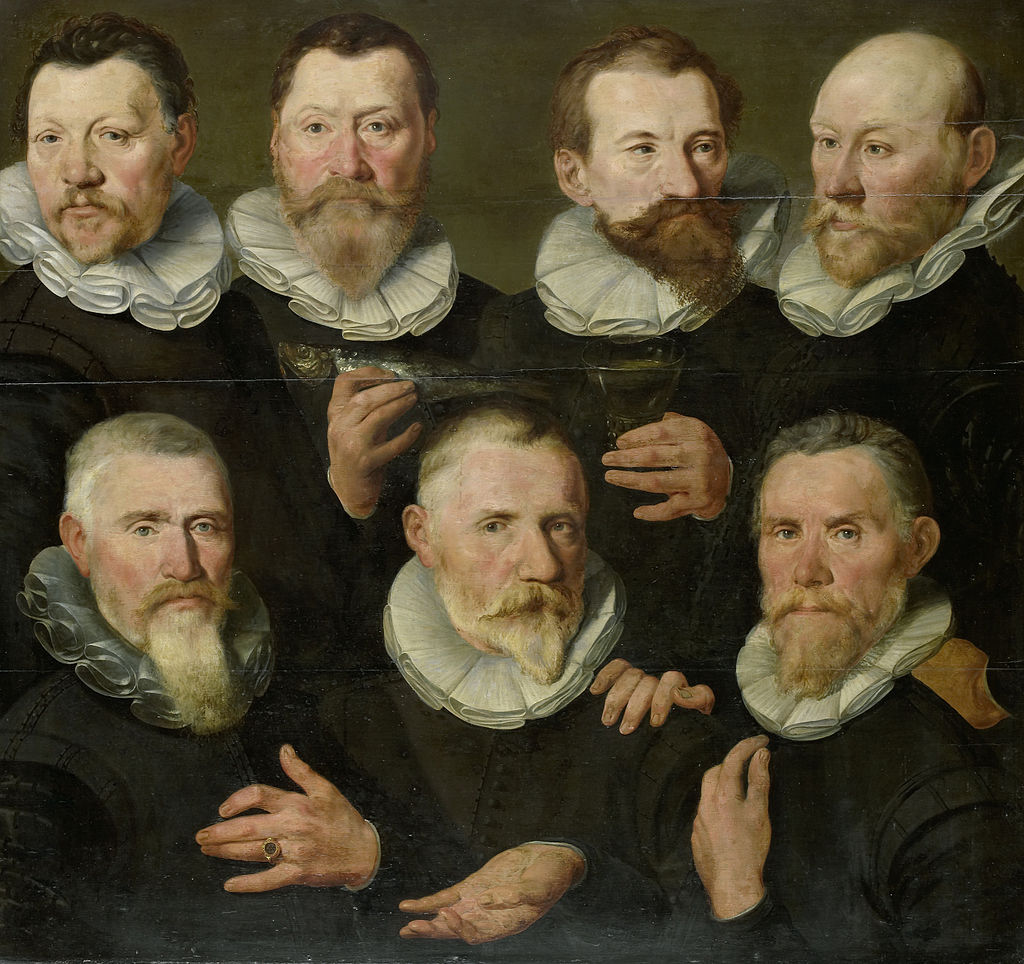
He was the first to use group portraits as historical paintings, which was the most famous type of painting at the time. The picture depicted in “The Night Watch” is dynamic, derived from his capture of the characters’ movements, and actually walks out of the canvas and goes straight to the audience. This is his work.
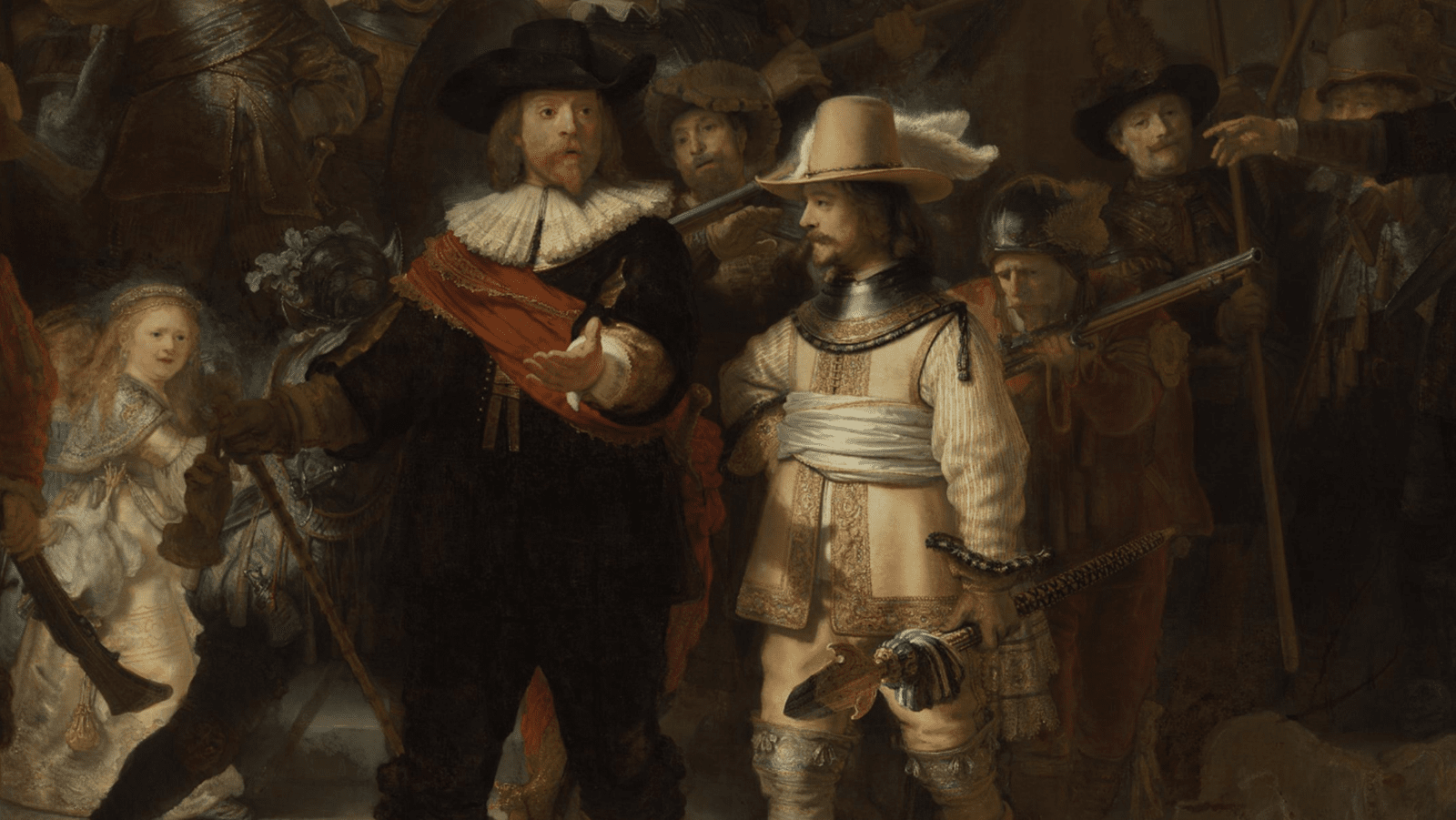
The little blond girl isn’t part of the Guard – she’s the mascot
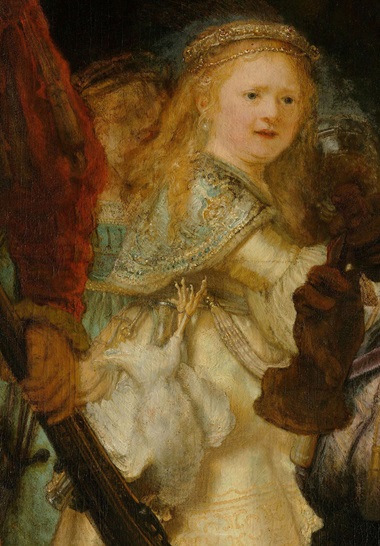
There are many accounts of who the unidentified girl in the background is. Is she Rembrandt’s late wife Saskia? Or is she an angel?
She must have been an important aspect of Rembrandt’s work since Rembrandt decided to highlight her presence in the crowded work. She was wearing a yellow dress, and her whole figure seemed to glow.
When we got closer, her presence proved to be really important to the overall composition. On her clothes we can see a dead chicken with its claws up, a bag of gunpowder and guns – all symbols of the guild. Rembrandt considered her an imaginary mascot for the folk militia.
Rembrandt may have made a cameo in ‘The Night Watch’

In the middle of the painting, behind a man in green and a guard wearing a metal helmet, you can vaguely see a person with only eyes and beret visible, and this person is believed to be Rembrandt himself. After all, he often sneaks self-portraits into his other famous works.
The painting was originally larger but was cropped
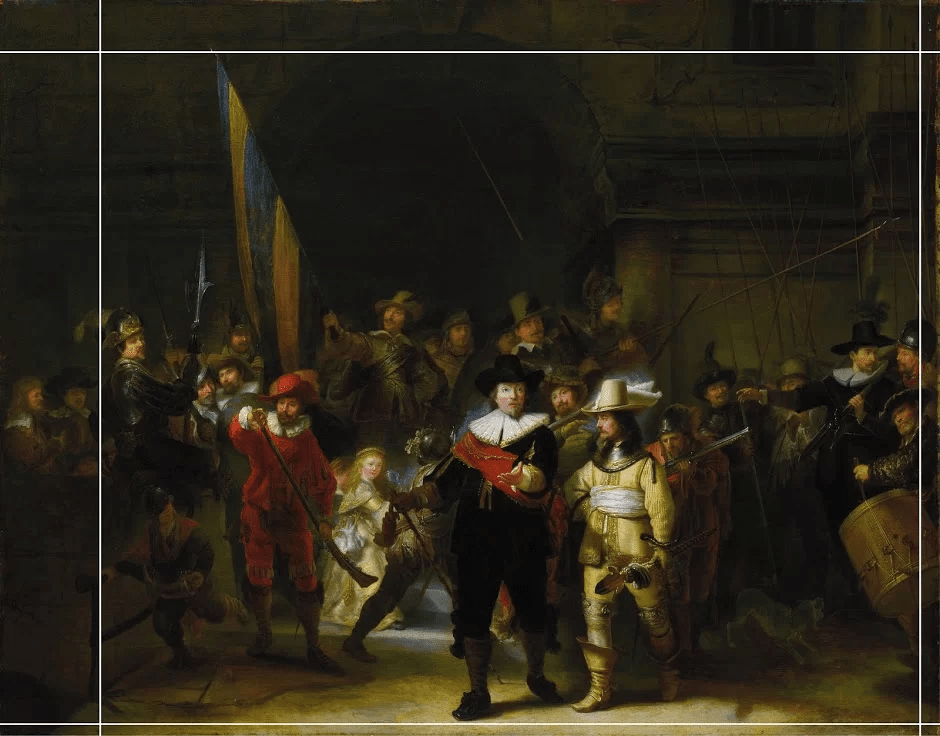
Thanks to this 17th-century copy of The Night’s Watch, we know that the work was originally larger. The monumental painting had to be cut from three sides to fit between its new location, the two doors of Amsterdam City Hall, where it was moved in 1715. The cropped canvas strips are not preserved.
The Night Watch was attacked 3 times

On January 13, 1911, a down-and-out naval cook slashed The Night’s Watch with a knife, supposedly in protest of unemployment. There was a second knife attack on September 14, 1975, this time by a Dutch school principal who considered it his sacred mission to destroy the painting. After that, the painting was placed under permanent protection. Still, an unemployed Dutchman sprayed the piece with concentrated sulfuric acid on April 6, 1990. Each repair was able to repair the damage, leaving few battle marks.
On permanent loan to the Rijksmuseum
It’s easy to think that a painting hanging in the Rijksmuseum’s most prestigious place belongs to its collection, right? But you are wrong, it officially belongs to the Amsterdam Museum , a museum that records the history of the city of Amsterdam, but the painting is permanently lent to the Rijksmuseum.
2.2 million people watch The Night Watch each year
These are obviously pre-pandemic numbers, but The Night Watch used to attract 2.2 million people a year — including Dutch students, locals and tourists.
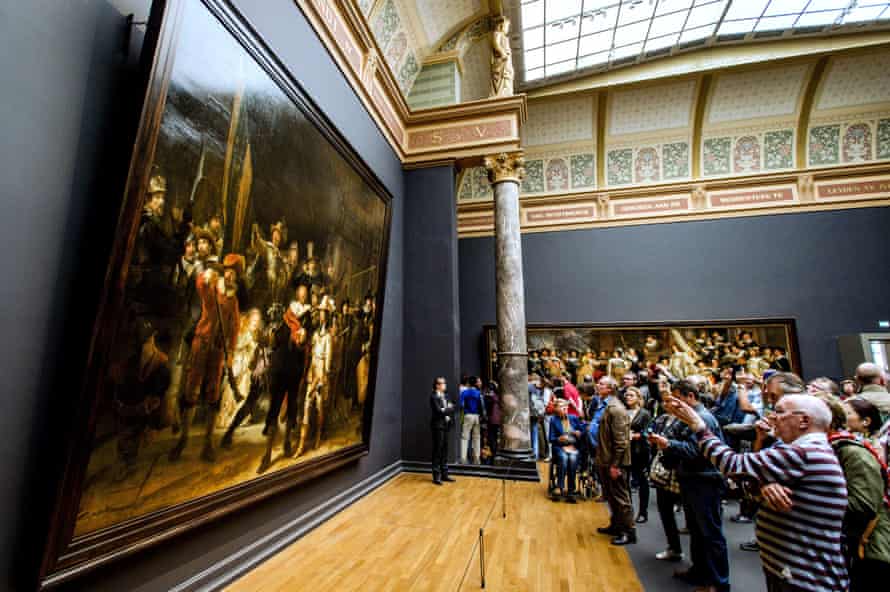
Operation Night Watch begins in July 2019

In July 2019, the Rijksmuseum launched the largest ever research and restoration project for The Night Watch. This takes place live in the museum and you can find out more about it here . The painting has been removed and is now re-displayed in the Honors Gallery. Operation Night Watch begins with the detailed research needed to determine the best restoration plan, involving imaging techniques, high-resolution photography and advanced computer analysis. The painting was last restored between 1946 and 1947.
→ Further reading
- Details about the attack on The Night Watch
- Research results
- digital collection
- A short film about the restoration of The Night’s Watch in the 1940s
Quick Facts
 Science: In Search of the Ultimate Theory
Science: In Search of the Ultimate Theory  Technology: Diagram of the Structure of an Interactive Mechanical Watch
Technology: Diagram of the Structure of an Interactive Mechanical Watch  Design: Anatomy of a Design System: What are the Different Levels and Parts of a Design System
Design: Anatomy of a Design System: What are the Different Levels and Parts of a Design System  Game: Pixel Art in the “Post-Digital Graphics Era”: Art Analysis of “The Land of the Wind”
Game: Pixel Art in the “Post-Digital Graphics Era”: Art Analysis of “The Land of the Wind”-
 Society: In Shanghai’s “fireworks”, more people are exhausted and accept their fate
Society: In Shanghai’s “fireworks”, more people are exhausted and accept their fate
donate
Shyrism.News is a bi-weekly selected newsletter covering new anecdotes, hot topics, cutting-edge technologies and more about life and the future. With careful and meticulous screening to fight against the algorithm that is strong outside and the middle, and neutralize the indifferent and rigid code with enthusiastic words.
If you find “Shyrism.News” valuable, please support and share it with your friends or social networks.
Thank you friends for tipping, please be sure to note your salutation or email address to avoid data loss when you clean up your account.
This article is reprinted from: https://shyrz.me/news-15-second-brain/
This site is for inclusion only, and the copyright belongs to the original author.

